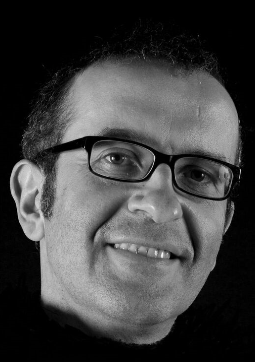Technicolor's David Touzé Describes How Single-Layer Technology Helps Broadcasters Manage Complexity of Delivering HDR and SDR Content
DENVER – Oct. 17, 2017—CABLE-TEC EXPO 2017—Although high dynamic range (HDR) technology is on track for substantial growth in the next few years, there are still challenges in supporting all the non-HDR screens on TVs, smartphones, and tablets that still represent the majority of devices currently present in the homes of consumers all around the world, says David Touzé, Senior Research Engineer, Technicolor, in a podcast interview for journalists during the SCTE 2017 conference being held in Denver, Colorado this week.
EDITOR’S NOTE: David Touzé will be participating in a panel discussion on this subject at 3 PM on Wednesday, October 18th, 2017 at the Colorado Convention Center Room 201/203.
EDITOR’S NOTE: David Touzé will be participating in a panel discussion on this subject at 3 PM on Wednesday, October 18th, 2017 at the Colorado Convention Center Room 201/203.
“It is for this reason that broadcasters need to be able to distribute both HDR and standard dynamic range—or SDR—content as seamlessly, effectively, and efficiently as possible. The broadcast industry, however, has faced challenges in achieving this objective because several formats of HDR have been introduced by different players across the ecosystem,” explains Touzé.
This has created the need for a universal distribution solution that can not only accommodate the complexity associated with different HDR formats but also addresses the need to deliver content to devices that can only accept SDR signals.
“To address this requirement, Technicolor has developed a single-layer solution, known as Technicolor HDR (ETSI standard SL-HDR1), which ensures backward compatibility with all non-HDR screens and non-HDR equipment. Broadcasters just need to produce a single feed, and the technology allows content to be converted into a format for both legacy screens and HDR screens,” says Touzé.
“To address this requirement, Technicolor has developed a single-layer solution, known as Technicolor HDR (ETSI standard SL-HDR1), which ensures backward compatibility with all non-HDR screens and non-HDR equipment. Broadcasters just need to produce a single feed, and the technology allows content to be converted into a format for both legacy screens and HDR screens,” says Touzé.

Touzé stresses that the Technicolor approach to HDR is agnostic in nature. The technology accepts any of the HDR formats as inputs and normalizes and delivers content on any SDR or HDR screen.
The single-layer approach makes it possible for broadcasters to more efficiently use network and production resources. It eliminates the need for costly infrastructure upgrades or duplicate processes. SL-HDR1 also ensures that content is properly distributed and accurately displayed simultaneously on both HDR and SDR displays for consistent end-user viewing quality on every device type.
Technicolor HDR has successfully passed through a series of field trials and tests over the past two years.
“Most recently, at the end of July 2017, Technicolor worked with Spectrum SportsNet in Los Angeles to broadcast two Major League Baseball games (between the Los Angeles Dodgers and the San Francisco Giants), using SL-HDR1 to convert the HDR production to SDR with meta-data for distribution across the United States and the United Kingdom. Devices capable of receiving the HDR signal used the metadata to display the HDR content. Non-HDR devices simply ignored the metadata and displayed the content in SDR.”
To listen in on the entire interview with David Touzé, visit: https://www.dropbox.com/s/rzopw0im6tbbs49/09_27_2017_Davi…
Journalists and analysts are free to pull quotes from this Q&A feature with attribution in media and market reports. For more details and context, contact: Lane Cooper 323 817 7547 Lane.cooper@technicolor.com
Photo: https://www.prlog.org/12671238/1
The single-layer approach makes it possible for broadcasters to more efficiently use network and production resources. It eliminates the need for costly infrastructure upgrades or duplicate processes. SL-HDR1 also ensures that content is properly distributed and accurately displayed simultaneously on both HDR and SDR displays for consistent end-user viewing quality on every device type.
Technicolor HDR has successfully passed through a series of field trials and tests over the past two years.
“Most recently, at the end of July 2017, Technicolor worked with Spectrum SportsNet in Los Angeles to broadcast two Major League Baseball games (between the Los Angeles Dodgers and the San Francisco Giants), using SL-HDR1 to convert the HDR production to SDR with meta-data for distribution across the United States and the United Kingdom. Devices capable of receiving the HDR signal used the metadata to display the HDR content. Non-HDR devices simply ignored the metadata and displayed the content in SDR.”
To listen in on the entire interview with David Touzé, visit: https://www.dropbox.com/s/rzopw0im6tbbs49/09_27_2017_Davi…
Journalists and analysts are free to pull quotes from this Q&A feature with attribution in media and market reports. For more details and context, contact: Lane Cooper 323 817 7547 Lane.cooper@technicolor.com
Photo: https://www.prlog.org/12671238/1

